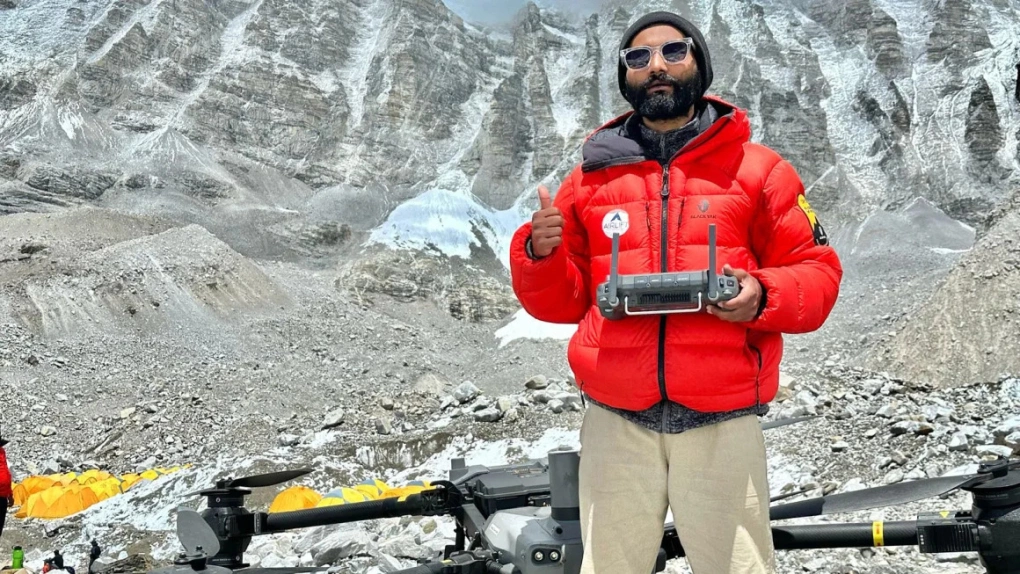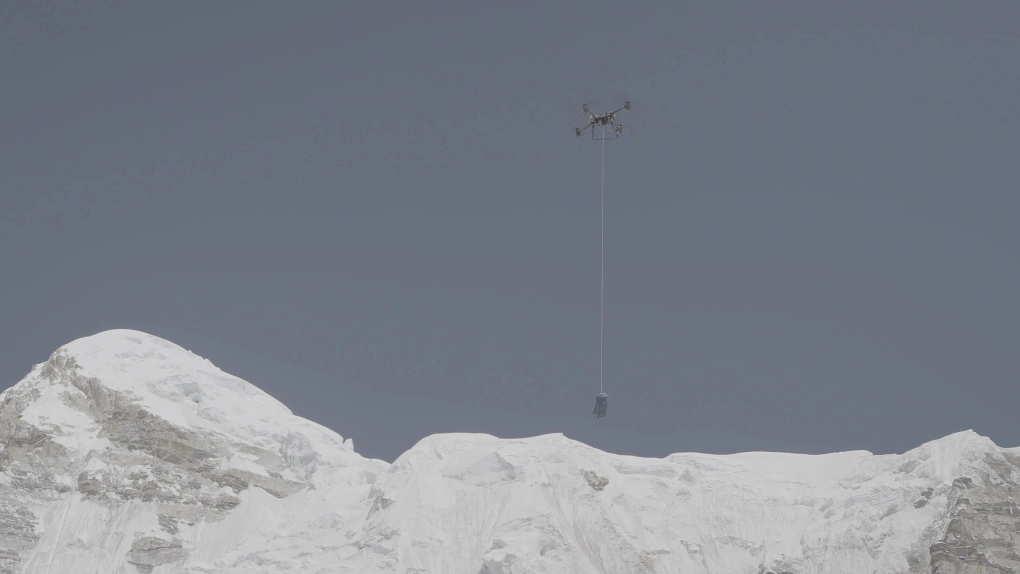Technology Changing the Game on the “Roof of the World”
In the increasingly harsh and perilous conditions of Everest, UAV (unmanned aerial vehicle) technology is gradually becoming an indispensable ally for the “ice doctors” – the Sherpas responsible for setting up and maintaining the climbing routes through the Khumbu Icefall, the most dangerous section on the journey to summit the world’s highest peak.
At Everest Base Camp, the UAV operation team utilizes drones to transport equipment, survey the terrain, map safe routes, and assist in rescue operations, significantly reducing the risks for Sherpas and mountaineering expeditions.

The Khumbu Icefall – Where UAVs Showcase Their Power
The Khumbu Icefall, with its massive seracs and deep crevasses, has claimed the lives of many Sherpas while performing their duties. In the past, Sherpas had to make dozens of treacherous trips between Base Camp and Camp I, risking their lives daily to establish a safe route.
Now, with a single UAV, these perilous tasks have become faster and safer than ever before.
Key Benefits of UAVs on Everest
- Shortening transportation time: The 3km journey from Base Camp to Camp I, which would take 6-7 hours on foot, can now be completed in just 6-7 minutes by drone.
- Reducing human risk: UAVs minimize the need for continuous travel through hazardous terrain to transport ladders, ropes, and oxygen tanks.
- Surveying and mapping 3D terrain: Drones can fly ahead to survey and determine the safest climbing routes, assisting the ice doctors in route planning and ensuring optimal safety measures.
- Assisting in emergency rescues: In case of a lost or stranded climber, UAVs can quickly locate them and provide timely support, increasing the chances of rescue.
- Contributing to environmental preservation: In the first cleanup operation, UAVs successfully transported nearly 500kg of waste from Camp I to Base Camp, helping to clean up Everest.
- Preserving Sherpa traditions: By reducing risks, UAVs make the Sherpa porter profession safer, encouraging the younger generation to stay connected with this vital tradition.
UAVs – An Inevitable Step Forward in Modern Mountaineering
Caroline Ogle, leader of Adventure Consultants (New Zealand), stated: “UAVs are an inevitable part of the evolution of mountaineering. Just as satellite phones and weather forecasting tools were once revolutionary, UAVs have emerged to help us conquer the peak with an increasingly higher level of safety.”
Amid the extreme conditions and life-threatening dangers of Everest, UAVs are not just a flying tool but a symbol of intellect, hope, and respect for every life involved.

